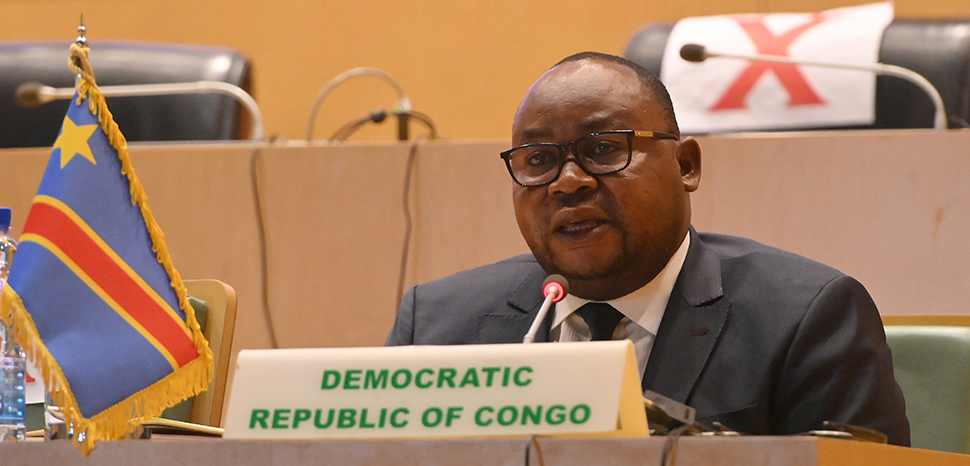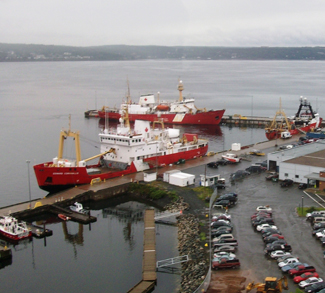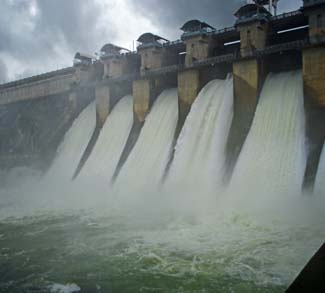The Democratic Republic of the Congo (DRC) became the seventh member of the East African Community (EAC) on 11 July after depositing the instruments of ratification on the accession of the EAC Treaty. Thanks to the DRC’s membership, the East African Community now extends from the Indian Ocean to the Atlantic Ocean. The expansion of the EAC will have repercussions for both the bloc and the DRC.
DRC and the EAC
The Congolese government deposited its final membership documents during a ceremony at the bloc’s headquarters in Arusha, Tanzania. Christophe Lutundula Apala Pen’ Apala, the DRC’s vice prime minister and minister of foreign affairs, represented Kinshasa on this historic occasion. The Congolese government had previously signed the Treaty of Accession on April 8.
Minister Apala noted that the DRC’s admission into the EAC was “a fulfillment of the vision of the founding fathers of the Organization of African Unity (now African Union), including Mwalimu Julius Nyerere, Mzee Jomo Kenyatta, Kwame Nkrumah, and Patrice Lumumba,” according to an EAC press release. The objective of these renowned individuals was to create a continent “united and prosperous” and “where people could trade and move freely.”
The EAC’s member states are now Burundi, Kenya, Rwanda, South Sudan, Tanzania, Uganda, and the DRC as of 11 July. The Community was established in 1967 and “re-established” in 2000. The Congolese Minister described the EAC as “the most integrated bloc on the entire African continent.” In a June 2022 commentary for the Italian Institute for International Political Studies, Research Fellow Lucia Ragazzi explains, “since the 1980s, efforts for [African] regional integration have focused in particular on steps functional to the economic integration of the continent, with [regional economic communities] acquiring a central role in managing relations among member states.”
What does each side gain?
In a March commentary for The Conversation, Jonathan Ang’ani Omuchesi, lecturer in Governance and Regional Integration at the Catholic University of Eastern Africa, summarized what each side obtains from the DRC’s membership in this bloc.
According to the academic, the DRC’s membership provides the EAC states with access to the Atlantic coast. This access is an important development since, up until 11 July, EAC countries needed to utilize Indian Ocean-based ports in Kenya and Tanzania; and an obvious problem with these options is piracy off the Somalia coast. Kenya’s defense and security forces have taken a solid stance to combat piracy, but the problem continues.
Additionally, Ang’ani explains that the DRC will expand the EAC’s size since “the DRC’s geographical area is far much larger than all the six East African states put together.” The DRC’s territory is 2.4 million sq km, while the bloc, before the DRC’s membership, was about 1.8 million sq km. In addition, the Congolese population (approximately 92 million) is also now part of the EAC, while the country has vital minerals like copper, coltan, cobalt, and uranium. This exponential growth of the bloc’s population and available resources will make the EAC more attractive for potential partners for trade and investment opportunities and “boost East Africa’s profile as an investment destination.”
As for what the DRC obtains from joining the Community, the gains are mainly economic since the country “will no longer be subjected to customs taxes at any of the region’s border points,” Scott Morgan, an analyst of African affairs and president of the consulting firm Red Eagle Enterprises, explained to the author. He adds: “Most of the DRC’s key markets, such as Bukavu and Goma, are geographically closer to the Kenyan port of Mombasa than the Atlantic Ocean.” Therefore, open borders via the EAC could reduce shipping and receiving commerce time. “This could be a huge benefit to a country which needs assistance with infrastructure projects.”
In other words, the Community and the DRC can gain much from this new level of integration. As the World Bank argues, “regional integration in Africa … can play a vital role in diversifying economies away from dependence on the export of just a few mineral products; in delivering food and energy security; in generating jobs for the increasing number of young people; and in alleviating poverty and delivering shared prosperity.”
Looking ahead
The EAC’s priorities for the 2022-2026 period include the full implementation of the Single Customs Territory (SCT); enhancing the domestication and implementation of regional commitments in line with the EAC Common Market Protocol; attaining an EAC Single Currency; and strengthening regional peace, security and governance.
While these are admirable goals, some of the more ambitious objectives may be hard to reach. One example is the EAC Single Currency. The East African Monetary Union (EAMU) Protocol was adopted in 2013, which “lays the groundwork for a monetary union within 10 years and allows the EAC Partner States to progressively converge their currencies into a single currency in the Community.” However, it is unclear if the DRC’s membership will force the EAC to re-adjust its goal for a Single Currency, which is currently scheduled to occur in 2023.
Another goal was mentioned in late June when the EAC announced the launch of the Regional Bio-economy Strategy 2021-22/2031-32. “The plan… seeks to ensure the transformation of economies and place innovation in bio-based products and processes at the center, with a bio-based circular economy as the organizing framework.” An environmentally-friendly, sustainable economy is a major objective for governments around the world, and hopefully the seven EAC member states will realize the bloc’s strategy.
Challenges
The DRC’s membership in the EAC brings a set of challenges. Membership in the East African Community occurs at a sensitive time for the DRC, as the country experiences a strong wave of violence in its Eastern provinces. The country is also at odds with neighboring Rwanda, a fellow EAC member, due to allegations of governments supporting M-23 insurgents in the DRC. Thus, the EAC must do its part to promote peace between its member-states to maintain bloc unity.
Regarding security, Voice of America (VOA) reported in May that the member states of the bloc agreed to deploy a regional security force, led by Kenya, to the Eastern DRC. At the time of writing, it is unclear how many EAC troops will be deployed, how many each country will contribute – though it is likely that Rwanda will not contribute troops – and when they will arrive in the DRC. Some Congolese citizens have rejected this proposal.
There are also tensions and disagreements between member states concerning trade and tariffs. According to Fibre 2 Fashion, a publication about the textile industry, EAC members are “lacking a consensus over preferential Rules of Origin and tariffs on textile and apparel and goods produced in special economic zones (SEZs).” Some EAC member states, including the DRC, according to the publication, support the position of the African Continental Free Trade Area’s (AfCFTA) Secretariat; “Rwanda is undertaking internal consultations to joining them, while South Sudan and Tanzania are split on the review terms as they seek to allow more imports.” Adding one more seat to the proverbial table may complicate reaching a consensus over tariffs and future trade agreements.
One more concern stems from the current process of African integration. The African Union recognizes eight regional economic communities, Ragazzi explains, “and many African countries have multiple affiliations, creating what has been called a ‘spaghetti bowl’ of processes and regulations.” Thus, the DRC’s membership must reinvigorate the bloc and ensure that the EAC is not lost among a growing number of regional communities.
Conclusions
The Democratic Republic of the Congo’s membership in the East African Community comes at a critical time, both globally, regionally, and domestically. The world faces energy and food crises due to the Russian invasion of Ukraine. There are also tensions between the DRC and neighboring Rwanda due to violence in Eastern DRC regions caused by the M23 movement.
Joining the EAC membership will give the bloc access to the Atlantic Ocean and raise its image among potential extra-regional partners. Reduced tariffs and customs will similarly help the DRC’s economy. Moreover, the inhabitants of Congo’s Eastern areas can now reach the Indian Ocean via Tanzania. All EAC members have plenty to win from having the DRC in the bloc. Still, foresight and leadership are necessary to ensure that the East African Community’s expansion is a win-win situation.
The views expressed in this article belong to the authors alone and do not necessarily reflect those of Geopoliticalmonitor.com




